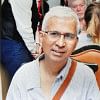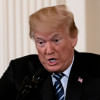Who is winning the Beijing-Washington tech war?

Huawei, China's electronics giant, went from being the world's second-largest smartphone maker to "essentially dead," stated the BBC, quoting a Chinese policy research analyst in January this year.
Just seven months later, in August, the company released its Mate 60 Pro flagship phone, which is powered by the 7-nanometre Kirin 9000S chip manufactured by China's Semiconductor Manufacturing International Corporation (SMIC). Before this, the most advanced chip SMIC was known to be capable of making had a 14-nanometre design. It was a stunning show of defiance of the Washington-led sanctions against Beijing.
To put the nanometre metric in perspective, a strand of human hair is about 50,000 to 100,000 nanometres wide. And the most advanced chip makers, such as Taiwan's TSMC, can make 2-nanometre chips. The thinner the chip, the faster it is. These advanced chips run sophisticated artificial intelligence (AI) algorithms in cutting-edge products such as fighter jets, missiles, satellites, and supercomputers. One crucial aim of the Washington-led tech war is preventing Beijing from making advanced chips by blocking technology from the West, for instance, the Extreme Ultraviolet (EUV) lithography machine from the Netherlands' ASML. But as SMIC moved to the 7-nanometre domain, sanctions don't seem to be working.
However, jumping to the conclusion that China is fast catching up in chip and other critical technologies will be an oversimplification of a complex phenomenon. The Australian Strategic Policy Institute tracks 44 critical technologies foundational for economies, societies, national security, energy production, health, and climate security. Its research reveals that China has built the foundations to become the world's leading science and technology superpower through high-impact research across several critical and emerging technology domains.
Beijing is striding ahead, no doubt. Its AI strategy came out in 2017, while the US adopted an AI document in 2021. Then, blindsiding everyone, China tested a new orbital bombardment system in 2021 that could potentially evade Washington's missile defence system.
But then there are other sides of the story. Beijing is pumping billions of dollars to become the global AI leader by 2030. Its scientists are publishing more AI-related scientific papers than anyone else. Still, it was the US' Google, Microsoft, and OpenAI consortium that has made an AI chatbot while the Chinese counterparts are playing catch-up. This simple example illustrates the case that technological advancement entails a combination of many related things, including basic research, a conducive ecosystem for innovation and business, talent, and a solid motivational drive.
The West has a foundational advantage. Its vibrant and liberal democracies often supercharge innovation and productivity by facilitating decentralisation, experimentation, failure, and iteration
The West has a foundational advantage. Its vibrant and liberal democracies often supercharge innovation and productivity by facilitating decentralisation, experimentation, failure, and iteration. The number of scientific papers or the first landing on the dark side of the moon (China made history by doing so in 2016) is not as significant as a combined metric of many related phenomena for measuring technological progress.
That's not to say that China lacks innovativeness, as the Shenzhen case may explain. Until the 1980s, just over the border from Hong Kong, it was a sleepy fishing village with fewer than 100,000 inhabitants. Today, it's a sprawling metropolis of high-rises, and home to 12.5 million residents where many tech titans are conducting research on and making almost everything related to AI, robotics, 5G, 6G, surveillance technology, and much more, effectively becoming China's answer to Silicon Valley. Anything that costs several thousand dollars elsewhere is on offer for a few hundred in Shenzhen, that too within arm's reach. Critical research programmes are, of course, the domain of state-owned universities and institutes related to the People's Liberation Army. But even with a centralised governance structure and a command economy, China can blindside the US in this epic battle for tech supremacy, as it has done on so many occasions. In the long term, its leading research position may put China in a dominant role not just in current technological development but in future technologies that don't yet exist.
Then there are Chinese characteristics, as the Berlin-based Mercator Institute for China Studies points out. Beijing's leadership has adopted technology as the strategic high ground in Sino-US competition and the "biggest geopolitical challenge of the 21st century" in bilateral relations. Historically, it has a far-sighted vision and is adept at playing long games, which it has demonstrated on several occasions, such as gaining membership at the United Nations Security Council in 1971, securing a foothold in Afghanistan after the messy departure of the British, Russians, and Americans, and dealing with human rights issues at the world stage. As an ascending superpower, it can afford the time to keep playing such a game in the current tech rivalry.
But is there any winner at all? Or, even more importantly, who will be the greatest loser? As it turns out, the entire world, everyone, is a casualty of this superpower rivalry that is fragmenting the world. A recent IMF blog says: "A fragmented world is likely to be a poorer one." Two percent of global GDP will disappear, mainly from emerging markets and developing economies.
Closing each other's markets will send companies to bankruptcy, erasing millions of jobs. This phenomenon will spread worldwide like a chain reaction, making everything costlier and everyone poorer. In a world where an innovation economy is crucial to progress and shared prosperity, fragmentation will only increase misery.
Dr Sayeed Ahmed is a consulting engineer and the CEO of Bayside Analytix, a technology-focused strategy and management consulting organisation.
Views in this article are the author's own.
Follow The Daily Star Opinion on Facebook for the latest opinions, commentaries and analyses by experts and professionals. To contribute your article or letter to The Daily Star Opinion, see our guidelines for submission.

 For all latest news, follow The Daily Star's Google News channel.
For all latest news, follow The Daily Star's Google News channel. 











Comments